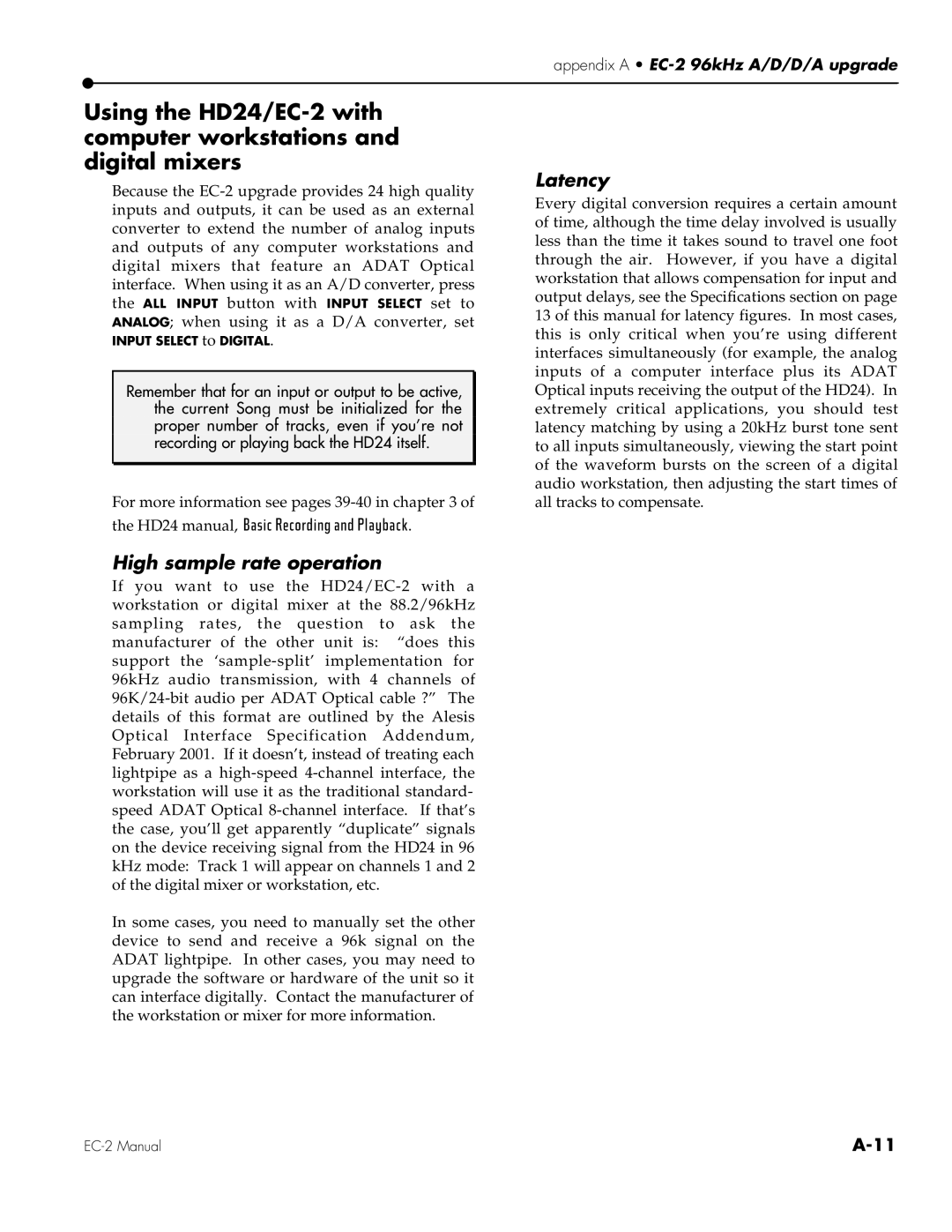
appendix A •
Using the
Because the
Remember that for an input or output to be active, the current Song must be initialized for the proper number of tracks, even if you’re not recording or playing back the HD24 itself.
For more information see pages
the HD24 manual, Basic Recording and Playback.
High sample rate operation
If you want to use the
In some cases, you need to manually set the other device to send and receive a 96k signal on the ADAT lightpipe. In other cases, you may need to upgrade the software or hardware of the unit so it can interface digitally. Contact the manufacturer of the workstation or mixer for more information.
Latency
Every digital conversion requires a certain amount of time, although the time delay involved is usually less than the time it takes sound to travel one foot through the air. However, if you have a digital workstation that allows compensation for input and output delays, see the Specifications section on page 13 of this manual for latency figures. In most cases, this is only critical when you’re using different interfaces simultaneously (for example, the analog inputs of a computer interface plus its ADAT Optical inputs receiving the output of the HD24). In extremely critical applications, you should test latency matching by using a 20kHz burst tone sent to all inputs simultaneously, viewing the start point of the waveform bursts on the screen of a digital audio workstation, then adjusting the start times of all tracks to compensate.
